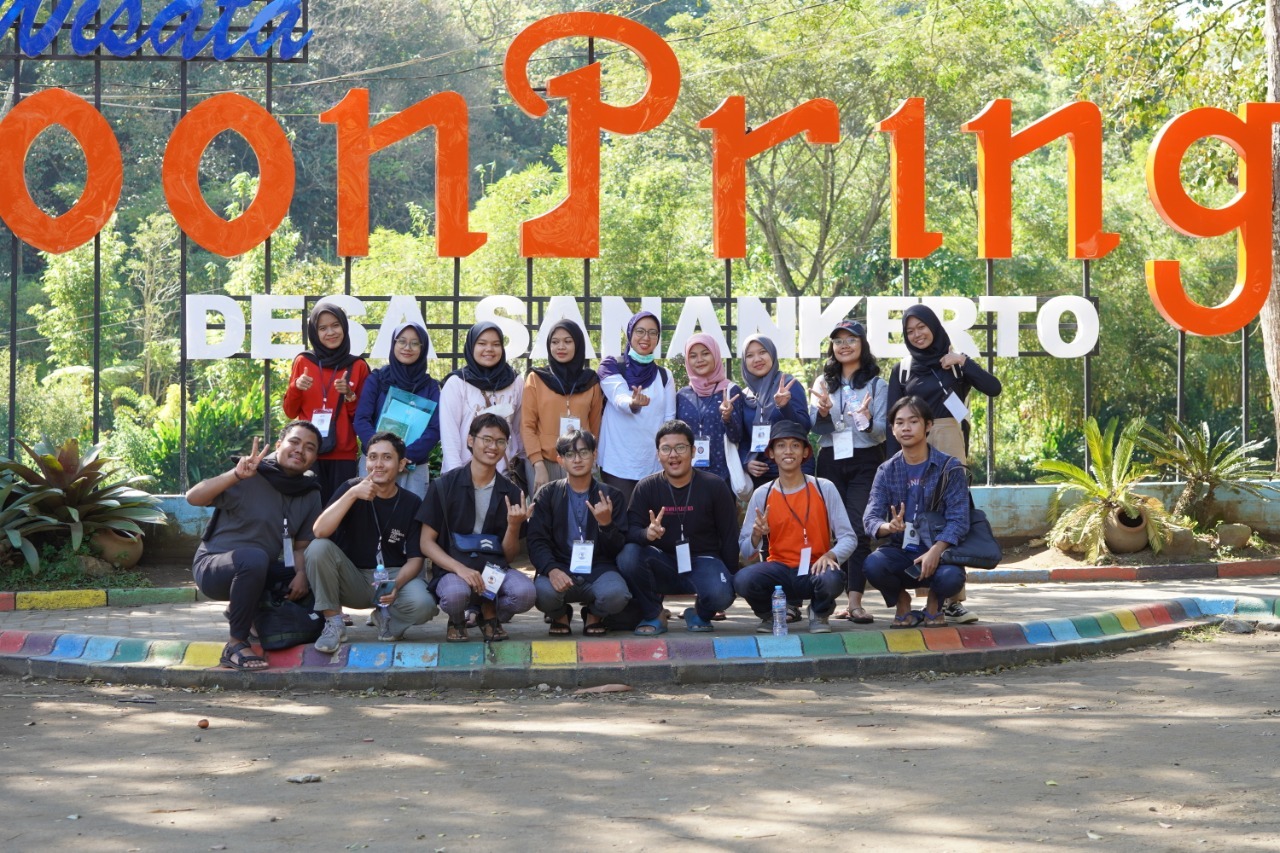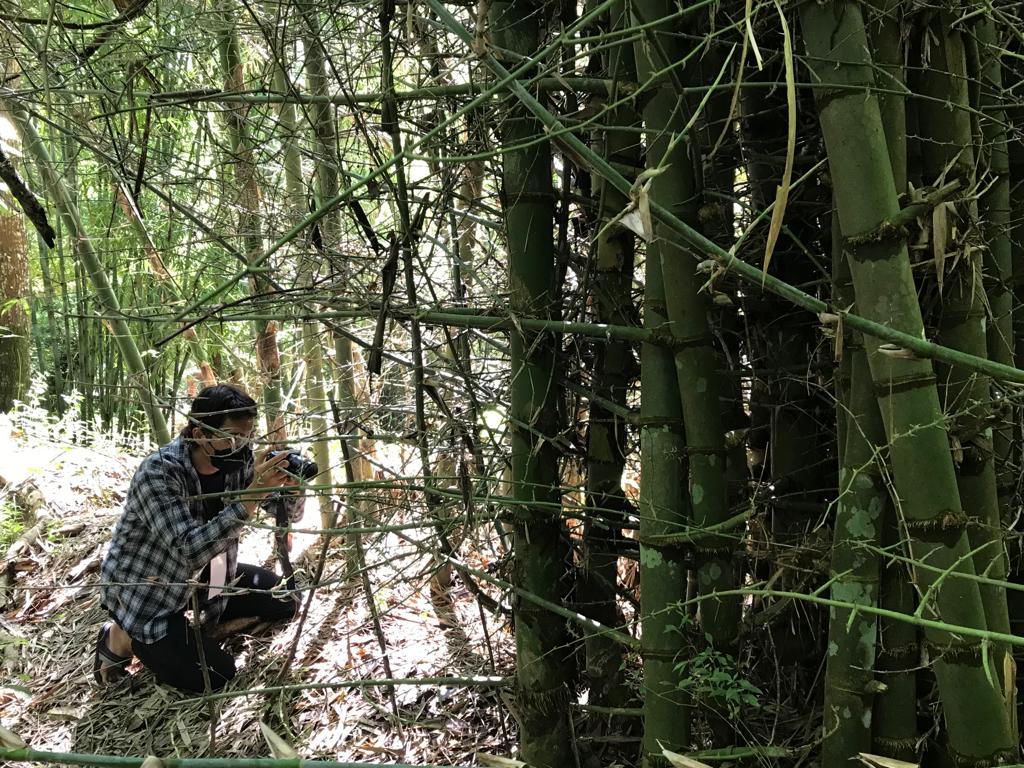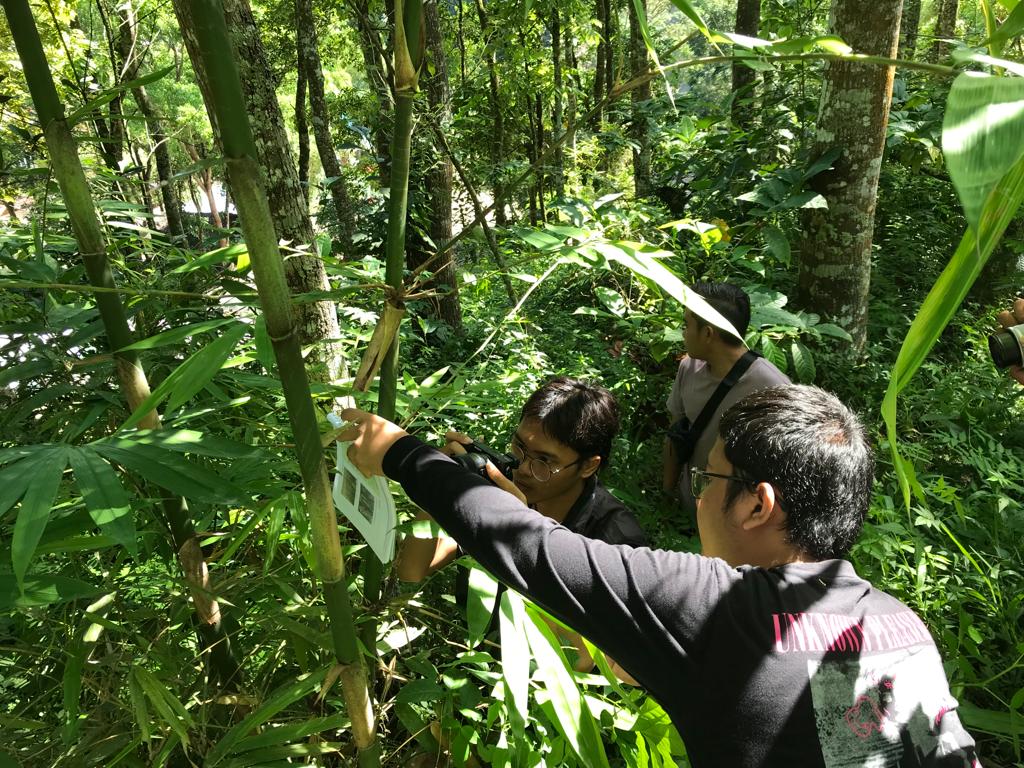ITS KKN Community Services (Abmas) Helps to Manage QR Code-Based Bamboo Diversity

The ITS Abmas KKN team will make observations at the Boonpring arboretum in Sanankerto Village, Malang Regency
ITS Campus News – To further increase the insight into local communities and stimulate tourist attraction, the Community Service (KKN Abmas) team of the Institut Teknologi Sepuluh November (ITS) seeks to manage an inventory of bamboo species. Based on technology, the team created a website and Quick Response (QR) code as a place for inventorying these bamboo species.
ITS Abmas KKN team coordinator Muhammad Zamharir Rojafi revealed that his team’s activities were focused on Boonpring, Sanankerto Village, and Malang Regency. According to him, the government of Sanankerto Village is increasing the types of bamboo in the bamboo forest in the Boonpring area since it was designated as a nursery or botanical forest.
He said the 20-hectare forest has uniqueness and great potential. “Apart from being a tourist destination, this forest is also used as a research center and bamboo plant conservation,” said the student, who is usually called Ari.
Ari continued the bamboo nursery and laboratory in Boonpring, Sanankerto Village was developed as a center for breeding and preserving rare bamboo. As an environmental education tourism area, the Boonpring bamboo nursery should be able to provide complete information regarding data on bamboo species and their potential. “However, the Boonpring arboretum in Sanankerto Village does not yet have this,” he said.

One of the ITS Abmas KKN team is documenting one type of bamboo to be observed
The Abmas KKN team led by ITS Biology Department lecturer Indah Trisnawati Dwi Tjahjaningrum SSi MSi PhD conducted observations and inventories of bamboo, resulting in data on the diversity and classification of each type of bamboo. As many as 87 of the total 115 bamboo species that have been observed. “Observations were carried out for three days, from 27 to 29 June,” said Ari.

Several ITS Abmas KKN teams are observing bamboo species at the Boonpring arboretum in Sanankerto Village, Malang Regency
After conducting observations and research, the team made an inventory in the form of bamboo data consisting of morphological characteristics, scientific names, uses, and bamboo conservation status. “Furthermore, the data will be linked to the information provider’s website, then integrated with the bamboo inventory information system,” explained the Biology Department student.
Later, the bamboo inventory information system will be used by tourism managers and Village Owned Enterprises (BUMDes) to manage their bamboo data. In addition, the information system can also be used by visitors who want to know and learn about the types of bamboo in the Boonpring arboretum. “Each type of bamboo will be installed with a board containing the type of bamboo and a QR Code containing detailed information on the bamboo,” he explained.
The KKN Abmas team consists of 19 people consisting of 15 students from the Biology Department and 4 students from the Informatics Engineering Department. Currently, the Abmas KKN team is in the process of working on the final stage, namely the integration of the QR Code with the database. “The target is that the final stage will be completed in September so that information system socialization can be immediately carried out to tourism managers,” added Ari.
Through this information system, Ari representing the ITS KKN Abmas team hopes to facilitate all people, both tourists, researchers, and local residents who need information about bamboo trees. “We also hope that local people can take advantage of this information technology to boost the local economy,” he concluded hopefully. (ITS Public Relation)
Reporter: Thariq Agfi Hermawan
Related News
-
ITS Collaboration with BPBD East Java, Launching VR Disaster Simulation
ITS Campus, ITS News — Supporting anticipation of disasters and continuing to educate the public, Institut Teknologi Sepuluh Nopember
September 16, 2022 17:09 -
Supporting the Implementation of Innovative Ideas, ITS and IYSA Hold International Competition
ITS Campus, ITS News — Institut Teknologi Sepuluh Nopember (ITS) has once again proven its commitment to supporting the
September 16, 2022 17:09 -
ITS Maintains Informative Qualification for Five Consecutive Years at KIP Awards
ITS Campus, ITS News — Institut Teknologi Sepuluh Nopember (ITS) has once again successfully maintained its Informative Qualification predicate
September 16, 2022 17:09 -
ITS Strengthens Smart Eco-Campus through UI GreenMetric 2024
ITS Campus, ITS News — Institut Teknologi Sepuluh Nopember (ITS) has once again demonstrated its commitment to environmental concern
September 16, 2022 17:09
